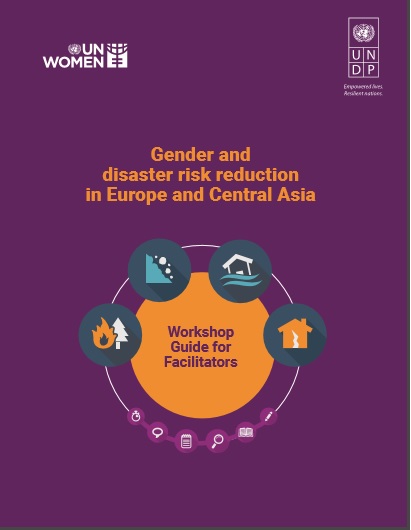
Gender and Disaster Risk Reduction in Europe and Central Asia

Although disasters affect entire communities, they impact women and men differently. Applying a gender lens to disaster risk reduction (DRR) can address gender-specific capacities and help ensure that women participate on an equal basis with men in disaster preparedness, response and longer term recovery.
Attention to gender equality is growing in DRR legal frameworks and practical tools. At the normative level, the Convention on the Elimination of All Forms of Discrimination against Women (CEDAW) Recommendation No37 on the “gender related dimension of DRR” and the Sendai Framework for Disaster Risk Reduction (2015-2030) both recently emphasized the importance of engaging women in disaster and climate risk reduction programmes. Engaging women and girls in boosting community resilience is critical for achieving the Sustainable Development Goals (SDGs).
Countries in Europe and Central Asia have made progress in developing gender-responsive DRR. But gaps remain in mainstreaming gender in the design, planning and implementation stages of DRR initiatives. Women's capacities are still overlooked, their vulnerabilities are misunderstood, and their potential to lead as agents of change is often ignored. Failure to consider the varied capacities and vulnerabilities of men and women perpetuates cycles of inequality, leads to ineffective DRR interventions and puts women at greater risk.
To meet the growing needs for gender responsive DRR, UN Women Europe and Central Asia Regional Office and UNDP Istanbul Regional Hub for Europe and the CIS collaborated in the development of this Gender in Disaster Risk Reduction in Europe and Central Asia workshop guide. It is designed for facilitators and trainers working to incorporate gender perspectives in disaster risk reduction programmes and initiatives. It is composed of four training modules on gender equality in disaster risk reduction, disaster preparedness, disaster response and recovery and in monitoring of DRR programs. It includes presentations, practical exercises and recommended readings.
In addition to the UN Women – UNDP core research and writing team, a peer review group composed of 10 UN Women, UNDP and UNFPA experts provided insights and oversight during the drafting phase.